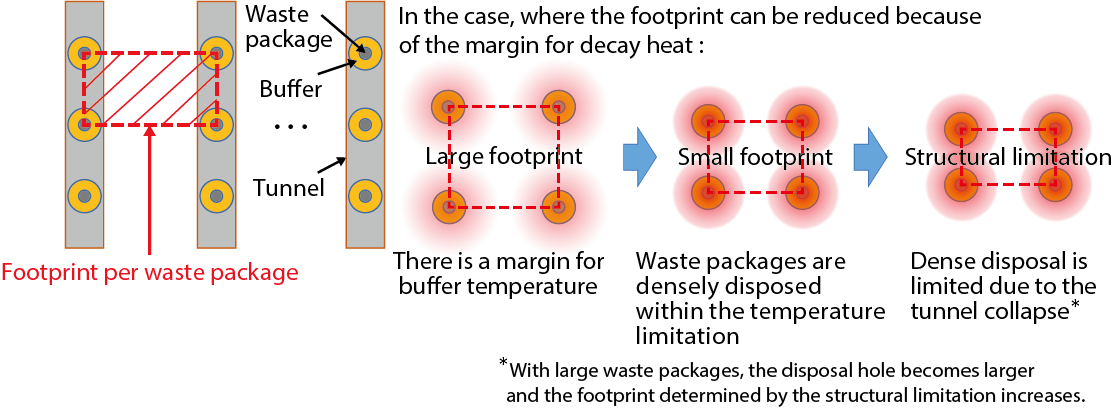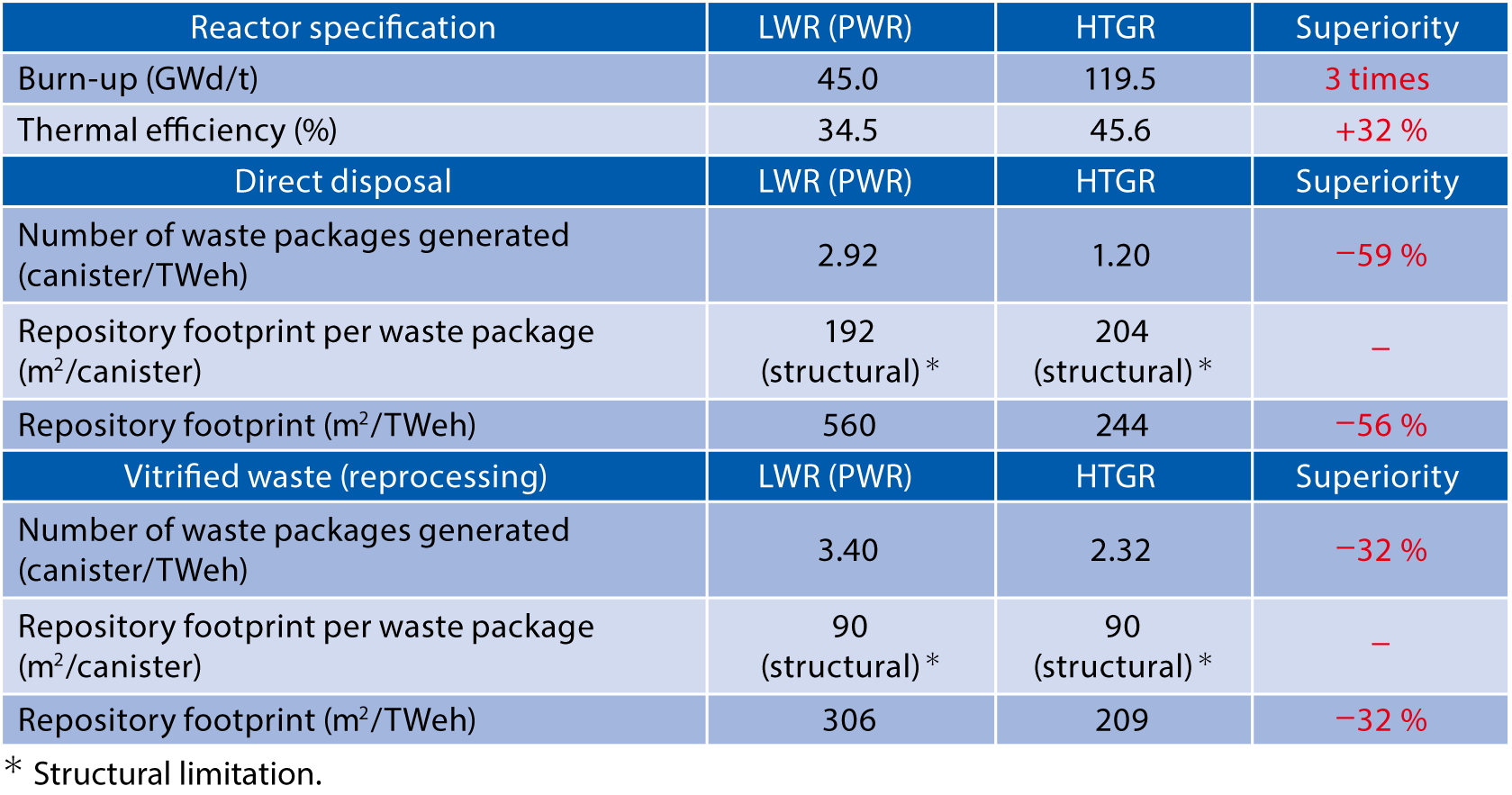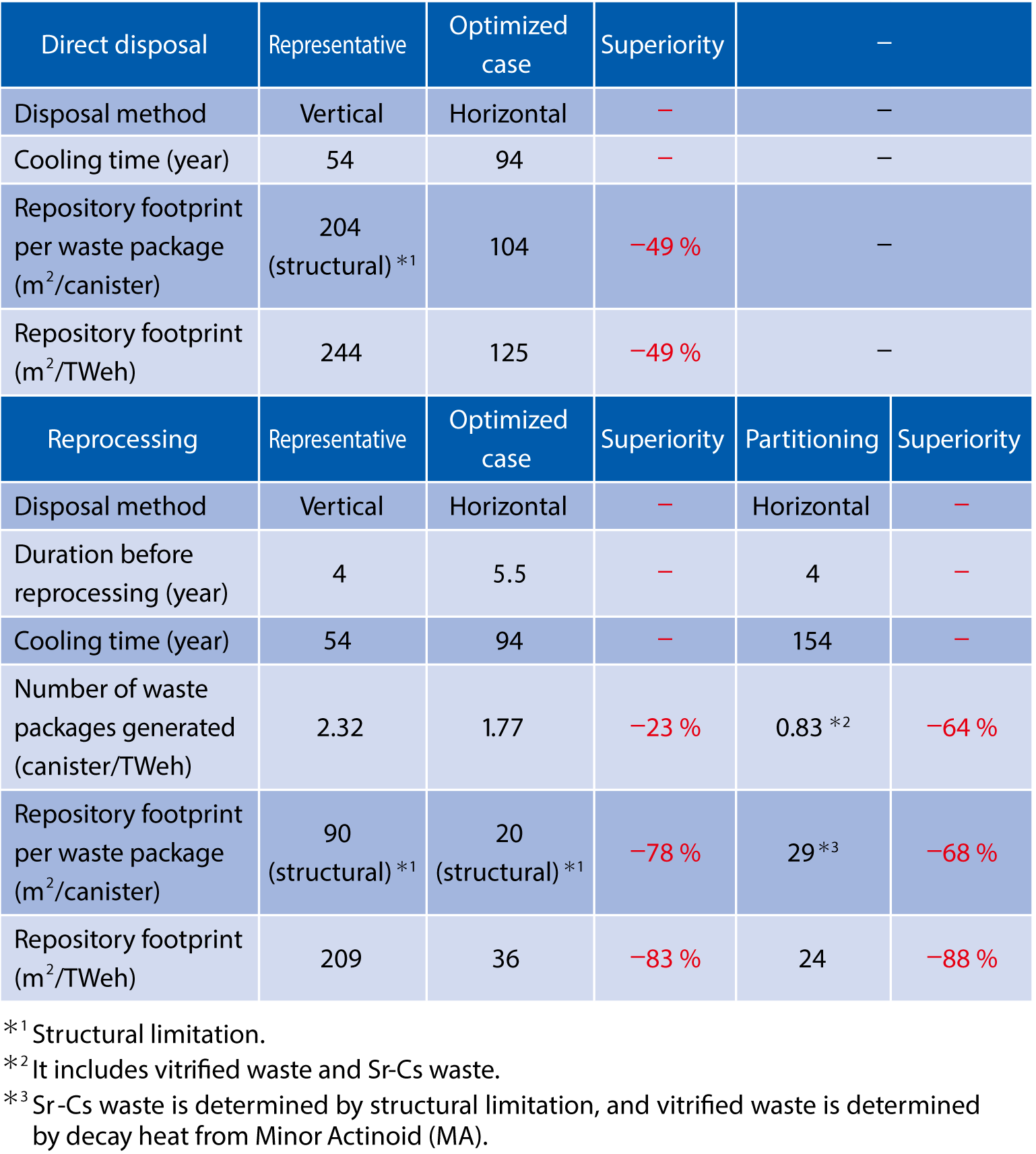
Fig.6-4 Concept of repository footprint
Table 6-1 Comparison of number of high-level radioactive waste generations per 1 TWeh electricity generation and repository footprint

Table 6-2 Optimization of HTGR radioactive waste and disposal method

Waste problems are important in nuclear power generation. The safety of waste disposal is ensured by limiting the public dose leaked from corroded waste packages. However, reducing waste volume is important for reducing required repository footprint.
The Fission Products (FPs) of electricity generation by High Temperature Gas-cooled Reactor (HTGR) is approximately 70 % of that generated by Light Water Reactor (LWR), because the high-temperature characteristics of HTGR confer excellent thermal efficiency. Exploiting these advantages, we aim to reduce the waste volume and hence the environmental burden of the reactor. After direct disposal, the coated particle fuel can highly confine the FPs and have high-temperature resistance; these are advantageous for cooling during storage as well.
The vitrified waste is placed into a canister (hereafter referred to as waste package), surrounded by buffer materials and disposed of into the geology. A similar disposal procedure is assumed for spent fuel. To prevent the buffer material from deteriorating under the decay heat from the waste, the temperature must be maintained below 100 ℃. For this reason, the pitch between waste packages is reduced within a range not exceeding the limit temperature, and the repository footprint is also reduced (Fig.6-4).
The waste package generation per unit of electricity generation is shown in Table 6-1. The footprints per waste package are determined by structural limitations, so are proportional to the canister size. The number of waste package generations and the repository footprint of HTGR is approximately 60 % lower in direct disposal, and 30 % in disposal with reprocessing, than in LWR. In disposal with reprocessing, the waste generation is reduced by the excellent thermal efficiency; in direct disposal, it is reduced by the nuclear characteristics, which reduce the generation of TRansUranium (TRU) element per energy release.
Next, we investigated the optimum conditions of waste volume and footprint reduction by referring to HTGR waste generation. We adopted a horizontal emplacement to avoid the structural limitation. In direct disposal, the footprint can be reduced by half, with 94 years cooling time before disposal (Table 6-2). After the period, FPs with short half-life decay. the decay heat is dominated by TRU with a long half-life, so extending the cooling time is ineffective. In disposal with reprocessing, delaying the reprocessing by only 1.5 years reduces the number of vitrified waste packages by 20 %. After cooling for 94 years (reaching the structural limitation), the footprint of disposal is reduced by 80 %. Finally, we investigated a group partitioning technology. Sr–Cs separation generates another waste product, but reduces the number of waste packages (including the Sr–Cs waste) by 60 %. After 154 years of cooling, the footprint is reduced by 90 %.
In this way, we confirmed that HTGR dramatically reduces the waste volume, and hence the environmental burden.